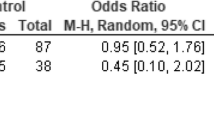Abstract
The diagnostic–therapeutic pathways (DTPs) are emerging as useful instruments for clinical management of complex diseases as gastric cancer, whose treatment is challenging and requires a multidisciplinary approach. However, the DPTs of patients with gastric cancer are still not defined yet. The aim of this study was to define the optimal DPT to be applied for patients with gastric cancer in the Veneto region. Rather than defining the ideal DTPs a priori, we conducted a preliminary research by analyzing the differences in the actual DPTs for patients with gastric cancer among different hospitals (hub and spokes) in Veneto. Then, the final DPT was elaborated based on the current available best clinical evidences; however, also the areas of homogeneity among the actual DPTs of the included centers as well as the critical issues that had emerged by our preliminary analysis were taken into account for pathway design. High heterogeneity in actual DTPs of patients with gastric cancer was observed among the analyzed centres. Moreover, some of the major criticisms have been found at crucial points of the current pathways. Based on these data, a reference path that is applicable to the whole-regional health network was constructed. The reference DTP is focused on multidisciplinary team management of patients with gastric cancer. Clinical pathways are essential tools to properly manage complex diseases such as gastric cancer. As such, more efforts should be done to implement their use.









Similar content being viewed by others
References
International Agency For Research On Cancer (2012) GLOBOCAN 2012: estimated cancer incidence, mortality and prevalence worldwide
Associazione Italiana Registri Tumori (AIRTUM), “I numeri del cancro in Italia 2015”
Kreys ED, Koeller JM (2013) Role of clinical pathways in health care provision: Focus on cancer treatment. Am J Health Syst Pharm 70(12):1081–1085
Elrod JK, Fortenberry JL (2017) The hub-and-spoke organization design: an avenue for serving patients well. BMC Health Serv Res 17(Suppl 1):457
Messager M, de Steur W, Boelens PG, Jensen LS, Mariette C, Reynolds JV et al (2016) Description and analysis of clinical pathways for oesophago-gastric adenocarcinoma, in 10 European countries (the EURECCA upper gastro intestinal group—European Registration of Cancer Care). Eur J Surg Oncol 42(9):1432–1447
Palla Ilaria, Bencivenga Maria, de Manzoni Giovanni, Merenda Roberto, Nitti Donato, Oliani Cristina, Pasini Felice, Zagonel Vittorina, Turchetti Giuseppe (2017) Il PDTA del paziente con adenocarcinoma gastrico: analisi organizzativa di cinque centri del Veneto. MECOSAN 101(22):75–96
De Manzoni G, Marrelli D, Baiocchi GL, Morgagni P, Saragoni L, Degiuli M et al (2017) The Italian Research Group for Gastric Cancer (GIRCG) guidelines for gastric cancer staging and treatment: 2015. Gastric Cancer 20(1):20–30
Allum WH, Blazeby JM, Griffin SM, Cunningham D, Jankowski JA, Wong R (2011) Association of Upper Gastrointestinal Surgeons of Great Britain and Ireland, the British Society of Gastroenterology and the British Association of Surgical Oncology. Guidelines for the management of oesophageal and gastric cancer. Gut 60:1449–1472
Okines A, Verheij M, Allum W, Cunningham D, Cervantes A (2010) Gastric cancer: ESMO Clinical Practice Guidelines for diagnosis, treatment and follow-up. Ann Oncol 21(Suppl 5):v50–v54
Waddell T, Verheij M, Allum W, Cunningham D, Cervantes A, Arnold D (2013) Gastric cancer: ESMO-ESSO-ESTRO Clinical Practice Guidelines for diagnosis, treatment and follow-up. Ann Oncol 24(Suppl 6):vi57–vi63
Acknowledgements
Roberto Merenda (Venice City Hospital); Donato Nitti (Padova University Hospital); Cristina Oliani (Hospitals of Montecchio Maggiore and Arzignano); Felice Pasini (Rovigo Hospital); Vittorina Zagonel (Veneto Institute of Oncology) are greatly acknowledged.
Author information
Authors and Affiliations
Corresponding author
Ethics declarations
Conflict of interest
All authors declare that they have no conflict of interest.
Research involving human participants and/or animals
The research does not involve human participants and/or animals.
Informed consent
There was no need to get informed consent.
Additional information
This study belongs to the Program for Research, Innovation and Health Technology Assessment (PRIHTA) of Veneto Region and has been founded by Ely Lilly.
The article is part of topical collection on Gastric Cancer Surgery.
Electronic supplementary material
Below is the link to the electronic supplementary material.
Rights and permissions
About this article
Cite this article
Bencivenga, M., Palla, I., Scorsone, L. et al. Clinical pathways in gastric cancer care. Updates Surg 70, 279–291 (2018). https://doi.org/10.1007/s13304-018-0544-2
Received:
Accepted:
Published:
Issue Date:
DOI: https://doi.org/10.1007/s13304-018-0544-2




